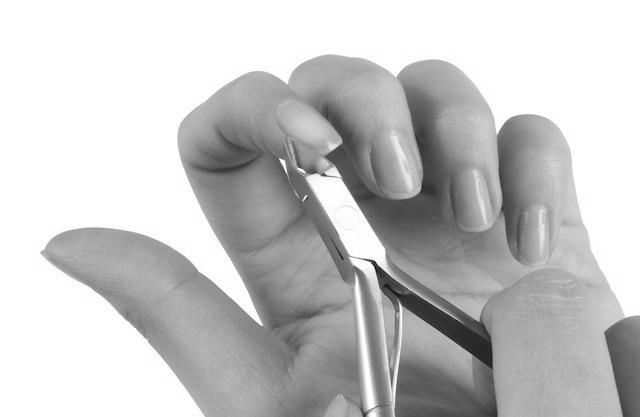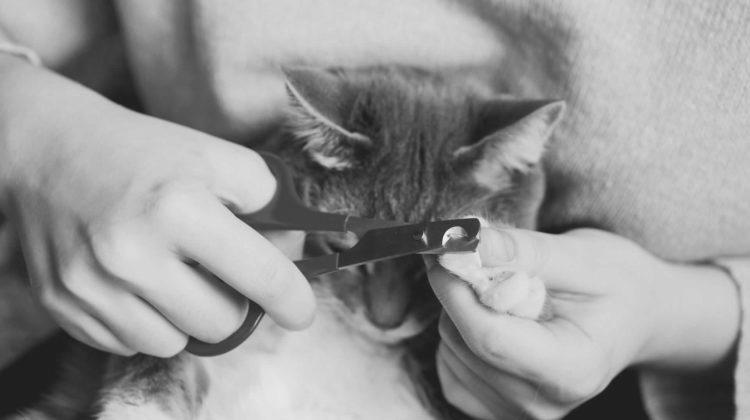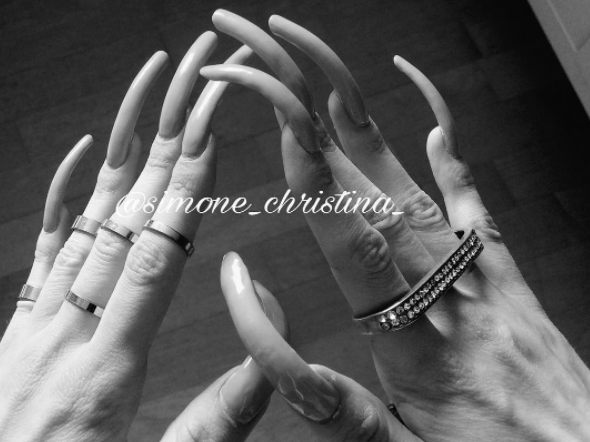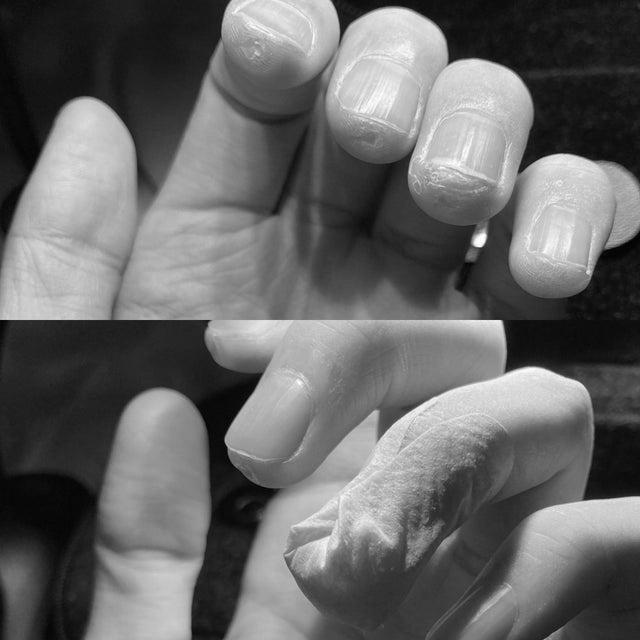Trim Your Nail Cuticles Properly to Avoid Ingrown Toenails

Did you know that cutting your nail cuticles can lead to an infection, irritation, and problems with your fingernail growth? If not correctly trimmed, this can result in bacterial infections and inhibit the growth of your fingernail. Dermatologist Ella Toombs recommends pushing back the cuticles with a wooden orange stick. That way, you’ll avoid cutting the nail and keep your cuticles in check.
Ingrown toenail

An ingrown toenail is a condition where a toenail grows inward, rather than outward, from the nail bed. It can be excruciating, and it can even lead to infection. If you notice these symptoms, you should see your doctor. Treatment for an ingrown toenail can involve surgery. A doctor may remove a portion of the toenail and the underlying nail bed and growth center. Minor surgeries are usually successful.
Ingrown toenails can be painful and infected if not properly treated. You’re at higher risk of getting an infection if you have this condition, as bacteria can grow on your feet and in your shoes. A simple solution is to trim the cuticles around your toenails regularly. If you have not done so in a while, consider having a nail clipper or pedicure installed.
If the ingrown toenail is not severe, you can treat it yourself at home. If you’re concerned that you have an infection or have high-risk medical conditions, see a foot specialist as soon as possible. In the meantime, wear shoes that don’t have high heels and moisturizing socks. You may also want to soak your foot in the water at room temperature and add Epsom salt. After this, gently massage the folded edge of the toenail to relieve the inflammation.
A doctor can help you find a home remedy for an ingrown toenail. At-home care can relieve discomfort caused by an ingrown toenail, but you may need to visit a podiatrist if you have diabetes, nerve damage, or a foot infection. A podiatrist can prescribe the proper treatment for your condition and alleviate your discomfort. Diabetes increases your risk of developing an ingrown toenail, so see your doctor as soon as possible.
Ingrown nail

If you don’t trim your nail cuticle properly, you risk an ingrown toenail. Besides being painful, an ingrown toenail can lead to bacterial and fungal infections. A bacterial infection leaks pus and blood, while a fungal infection produces thick, brittle, and smelly toenails. People with diabetes are particularly susceptible to ingrown toenails because of poor blood circulation in their feet and poor nerve function. Consequently, even a slight cut can develop into an infected ulcer and cause an infection.
In less severe cases, conservative treatment options are available. These vary depending on the severity of the ingrown nail and lifestyle. Traditional treatment options include the removal of the tapered portion of the nail with specific instruments. Avoid picking or pulling on the ingrown nail because it could lead to infection. Minor surgical procedures, such as nail lift surgery, remove a small portion of the ingrown nail and prevent regrowth. This procedure is often performed in the office and has a minimal impact on the patient’s daily life.
The toenail length is one of the primary factors contributing to an ingrown toenail. A good rule is to trim your nails after you shower. Will it help prevent your nails from drying out too much, as they are more prone to breaking and tearing? Toes are also more prone to ingrown toenails when they are too dry.
A mild form of an ingrown toenail is self-resolving, and you can remove it on your own. to hold the nail in place while the skin heals. If the pin is too painful, see your doctor for a professional assessment. The doctor may prescribe antibiotics or remove a portion of the nail. Call the nearest office or book an appointment online if you suspect an infection.
Ingrown toenails can be very painful, and if left untreated, they can even lead to permanent changes to the tissue. An ingrown toenail can also lead to infection and even painful swelling. You should soak your feet in the water if you notice swelling, tenderness, or pain. It is helpful to apply antibiotic cream to the infected area.
A good home remedy for an ingrown toenail is soak the affected foot in warm saltwater. The warm salt water will relieve the pain and prevent the infection from spreading. Taking an Epsom salt bath or an antibiotic cream will help prevent disease and help prevent further pain. You can also gently clip the affected part of the toenail. If you are too lazy to go to the doctor, you can take steps to cure an ingrown toenail.
If you continue to fail to trim your nail cuticles regularly, you risk developing an ingrown toenail. However, this condition is not always painful and is often completely curable. You can go to a podiatrist and get the section removed in such cases. It’s essential to be aware that there are different types of ingrown toenails, and it’s best to visit a podiatrist to diagnose which type you have.
Other causes of ingrown toenails include trauma, toenail fungus, and congenital toe shape. If you notice that the toe has a dark spot or a liquid-like substance, you may have an ingrown toenail. However, there are conservative treatments available for ingrown toenails. Your toe’s appearance and the symptoms can help you determine whether or not you have one.
Ingrown toenails can be caused by trauma, poor-fitting footwear, and improper nail trimming. Some individuals are genetically predisposed to this problem, and they may have long toenails. Ingrown toenails can also develop in people who wear tight shoes and socks. To prevent ingrown toenails, you must trim your nail cuticles regularly and try to keep your footwear as short as possible.
Why Are Some People’s Nail Tips White?

You might be wondering if your nails are white or if they have some other unusual pigmentation. Many possible causes include:
- Mees’ lines (white lines that run across your nail plate).
- Exposure to arsenic or thallium.
- Certain drugs.
Fungi, yeast, or other organisms can also cause your nails to look white. Here are some common causes and treatments.
Leukonychia

When you see white spots on your nail tips, you may have a condition known as leukonychia. This condition usually affects the whole nail, though the white spots only appear on a small portion in some cases. There is no cure for leukonychia, and the white areas will fade over time. However, if you have other underlying health conditions, you will need to seek treatment separately.
The cause of leukonychia is not entirely clear. There are several causes, including genetics, age, and trauma. Genetics is thought to play a role, but there is no proven cause. A single mutation in a gene called phospholipase C delta one may cause white nail tips. While this gene is usually found in the skin, it also occurs in the nail matrix.
Another cause of leukonychia is an intoxication of arsenic or thallium, which results in whitish lines on the nail tips.
Many possible conditions cause total white discoloration of the nail tips. Leukonychia treatment involves determining the underlying systemic illness and addressing the underlying cause. For instance, Lindsay’s nails are a type of apparent leukonychia. It is characterized by a whitish proximal half and a brownish distal portion that begins proximally where the regular nail ends and distally when its free end loses its attachment to the hyponychium. Dr. Thomas has successfully delivered over 2,000 babies and has seen thousands of patients with the condition.
Some people have white nail tips due to trauma to the nail plate. Injury to the nail plate, such as banging a desk, shutting a door, or improper clipping, can cause white nail tips. Fortunately, these white spots will eventually go away. However, in more severe cases, leukonychia can occur following a severe injury to the nail. Likewise, exposure to chemical agents can cause leukonychia on the nails, but the latter is rare.
Paronychia

There are many possible causes for some people’s total white discoloration of the nail tips. In many cases, the condition is a more systemic underlying illness symptom. In the case of paronychia, your GP can prescribe antibacterial tablets or creams or refer you to a dermatologist. If you experience white nail tips, they may be an early sign of chronic paronychia, taking months to clear. You should not pick or scrape your nails because this may cause the nail plate to thicken.
A common cause of this condition is a deficiency of vitamin A, which can affect your nails. If you have a vitamin deficiency, it is likely to lead to a whitening of your nails. However, if your nail tips are white, they may result from skin disease. If you have a white nail tip, you need to see a doctor as soon as possible.
Some other conditions can cause the color of fingernails to change, including bacterial infection under the nail. The disease, known as paronychia, is caused by a cut near the cuticle. Bacteria can infect the skin beneath the nail, which can be painful. Treatment for paronychia involves antibacterial medication and antibiotics. Your doctor will probably prescribe you medication to typically help your nails grow back.
Another common cause is leukonychia. In some people, this condition affects the entire nail plate. The nail becomes white or pink in this condition, with a crescent-shaped area in between. In other cases, the white areas will only be on the tips and eventually grow out. The white nail tips may indicate leprosy, cirrhosis, and typhoid fever in these cases.
Bruises

Why are some people’s nails white? Depending on the cause, this phenomenon can be genetic, a sign of chronic kidney disease, or even a symptom of cancer. Alternatively, it can also indicate certain conditions, such as diabetes or cirrhosis. However, it is simply a matter of normal aging in some cases. A good reason to know why your nails are white is to determine if you’re at risk for specific medical conditions.
In most cases, the nail tips of people with lunulae are white. Nail tips are colored depending on the inner cell material that remains in the nail plate cells. If the nail is entirely white before reaching the fingertip, it’s because it has been dried. This condition is quite rare and can be treated through proper care. A few other potential causes of nail whitening include a high fever or infection, a deficiency of vitamin C, or certain drugs.
Another cause of white tips is trauma to the fingernail. Trauma to the fingernail can cause a white spot to appear. Damage to the nail’s matrix (the layer of cells at the base of the nail) can cause white spots to appear. While the average fingernail grows about 1/32 inch per week, it may take several months for white spots to reach the tip.
Another cause is an imbalance of iron. Some people are born with an iron deficiency. However, white nail tips are much more common to occur due to a fungal infection. A white nail may also indicate a kidney problem. If the white areas are half white and have dark spots, they are likely caused by kidney disease. While these conditions are not severe, it’s best to visit a doctor if the white spots on your nails are persistent.
Fungal infections

If you have ever wondered, “Why are some people’s nail tips white?” you’re not alone. There are many reasons why some people develop this condition. Among them are nail fungus, thyroid disease, and Raynaud’s disease. In addition to these, some underlying medical conditions could be causing the infection. Acute paronychia, or “white nail tips,” occurs in just a few hours or can take as long as six weeks. The first kind of paronychia, or acute paronychia, is usually caused by a minor injury to the nail fold, such as nail-biting or water work. Pus forms around the nail bed in this type, often due to a Staphylococcus infection.
White nail tips may be caused by a genetic condition, such as total leukonychia, or they could be a sign of an underlying health problem. A person suffering from this condition should consult a doctor as these spots are not merely a cosmetic problem. They may also be a symptom of severe diseases such as kidney failure, diabetes, or cirrhosis.
If you have a thick black line from the base of the nail to the tip, this could be melanoma, manifesting as a dark blob. Depending on the condition, treatments for these health conditions can improve the health of fingernails, but you might need additional care to treat the underlying condition. If your fingernails suddenly change to an unusual color or have pitted brown spots, you should consult a doctor.
Other causes of yellow nail tips include a fungal infection of the nail bed and a skin disease around the nail. Although it is common for nails to grow slowly, the regrowth of fingernails can take six to nine months, and those of toenails can take anywhere from four to eighteen months. If you see white spots on your fingernails, they may have suffered an injury or condition months ago. Even though these spots do not require treatment, it is essential to seek medical care if you suspect these problems cause white spots on your fingernails.
COVID-19

There are several possible causes of white nail tips. Half-and-half nails are genetic, but they can also be a symptom of chronic kidney disease, liver disease, or diabetes. A person’s tip color might be affected by a medical condition, such as total leukonychia. Your doctor can help you determine the cause. It is always best to consult a doctor first before trying any treatment.
One possibility is melanoma. Melanoma, the deadliest form of skin cancer, can begin in the nail. It can occur on the tip of your fingernail or in the surrounding skin. You may not notice any other symptoms, and the color of your fingernail is often the only clue. Fortunately, there are easy ways to diagnose melanoma, including examining your fingernail.
Another possible reason for white nail tips is iron deficiency. While an iron deficiency is a potential cause, it is usually a result of a fungal infection. Another common reason for a white tip is trauma. Trauma to the nail can damage the matrix, which is the layer of cells at the base of your fingernail. It can lead to white spots on your fingernail or fingertip.
The condition is known as yellow nail syndrome. Nail fungal infections are most common in older adults and are often caused by fungi.








